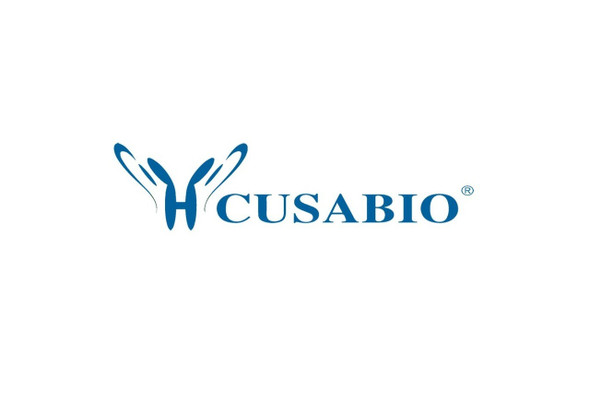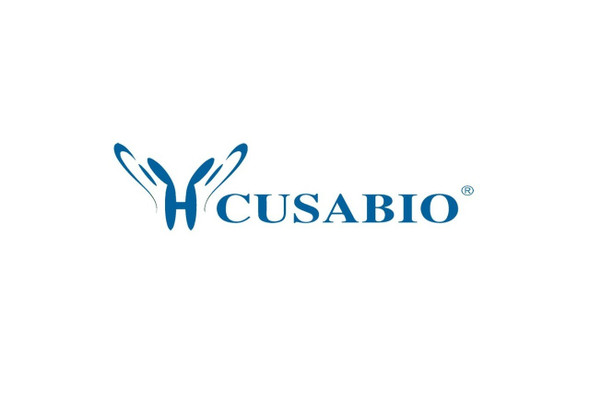Cusabio Human Recombinants
Recombinant Human T-cell surface glycoprotein CD3 epsilon chain (CD3E), partial | CSB-YP004931HU
- SKU:
- CSB-YP004931HU
- Availability:
- 3 - 7 Working Days
Description
Recombinant Human T-cell surface glycoprotein CD3 epsilon chain (CD3E), partial | CSB-YP004931HU | Cusabio
Alternative Name(s): T-cell surface antigen T3/Leu-4 epsilon chain;CD_antigen: CD3e
Gene Names: CD3E
Research Areas: Immunology
Organism: Homo sapiens (Human)
AA Sequence: DGNEEMGGITQTPYKVSISGTTVILTCPQYPGSEILWQHNDKNIGGDEDDKNIGSDEDHLSLKEFSELEQSGYYVCYPRGSKPEDANFYLYLRARVCENCMEMD
Source: Yeast
Tag Info: N-terminal 6xHis-tagged
Expression Region: 23-126aa
Sequence Info: Extracellular Domain
MW: 13.8 kDa
Purity: Greater than 90% as determined by SDS-PAGE.
Relevance: The CD3 complex mediates signal transduction, resulting in T-cell activation and proliferation. Required for normal immune responses (PubMed:15546002, PubMed:8490660).
Reference: "Isolation of cDNA clones encoding the 20K non-glycosylated polypeptide chain of the human T-cell receptor/T3 complex."Gold D.P., Puck J.M., Pettey C.L., Cho M., Coligan J., Woody J.N., Terhorst C.Nature 321:431-434(1986)
Storage: The shelf life is related to many factors, storage state, buffer ingredients, storage temperature and the stability of the protein itself. Generally, the shelf life of liquid form is 6 months at -20?/-80?. The shelf life of lyophilized form is 12 months at -20?/-80?.
Notes: Repeated freezing and thawing is not recommended. Store working aliquots at 4? for up to one week.
Function: Part of the TCR-CD3 complex present on T-lymphocyte cell surface that plays an essential role in adaptive immune response. When antigen presenting cells (APCs) activate T-cell receptor (TCR), TCR-mediated signals are transmitted across the cell membrane by the CD3 chains CD3D, CD3E, CD3G and CD3Z. All CD3 chains contain immunoreceptor tyrosine-based activation motifs (ITAMs) in their cytoplasmic domain. Upon TCR engagement, these motifs become phosphorylated by Src family protein tyrosine kinases LCK and FYN, resulting in the activation of downstream signaling pathways
Involvement in disease: Immunodeficiency 18 (IMD18)
Subcellular Location: Cell membrane, Single-pass type I membrane protein
Protein Families:
Tissue Specificity:
Paythway: Hematopoieticcelllineage
Form: Liquid or Lyophilized powder
Buffer: If the delivery form is liquid, the default storage buffer is Tris/PBS-based buffer, 5%-50% glycerol. If the delivery form is lyophilized powder, the buffer before lyophilization is Tris/PBS-based buffer, 6% Trehalose, pH 8.0.
Reconstitution: We recommend that this vial be briefly centrifuged prior to opening to bring the contents to the bottom. Please reconstitute protein in deionized sterile water to a concentration of 0.1-1.0 mg/mL.We recommend to add 5-50% of glycerol (final concentration) and aliquot for long-term storage at -20?/-80?. Our default final concentration of glycerol is 50%. Customers could use it as reference.
Uniprot ID: P07766
HGNC Database Link: HGNC
UniGene Database Link: UniGene
KEGG Database Link: KEGG
STRING Database Link: STRING
OMIM Database Link: OMIM










